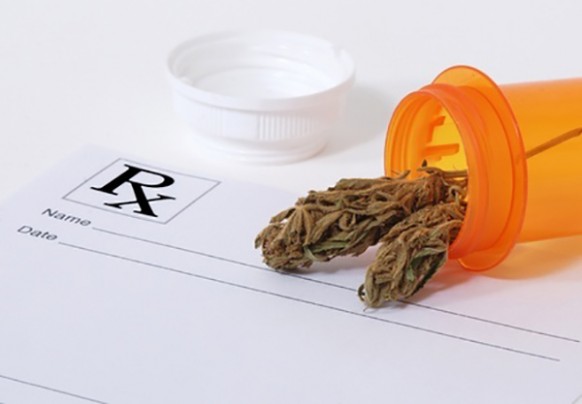How Medical Marijuana Affects Chronic Pain

How Medical Marijuana Affects Chronic Pain, Ends the Opioid Cycle, and Improves Patient Quality of Life
By Maggie Park
In 1996, California legalized medical marijuana for the treatment of AIDS, cancer, and several other specific medical conditions. Since then, the public has learned more about the healing nature of cannabinoids and the body’s own cannabinoid receptors. Knowledge about the true nature of Cannabis sativa, more commonly known as marijuana, has spurred the populations of 22 additional states and the District of Columbia to legalize the drug, especially for medical use.
The Cannabinoid System
The human body is equipped with pain management systems, including cannabinoid receptors and opioid receptors. Cannabinoid receptors respond to a group of lipids called endocannabinoids as well as to the cannabinoids found in marijuana. Opioid receptors respond to the neurotransmitter endorphin as well as to narcotics, such as Lortab, OxyContin, Vicodin, and the street drug heroin.
According to the National Institute of Health, the cannabinoid system has four subtypes of receptors, of which CB1 is the most frequently studied. Although most of these receptors are located in the brain, a significant number of CB1 receptors are found in the spinal tissue and other areas that impact a patient’s perception of pain.
Endocannabinoids, a small group of lipids in the body, activate cannabinoid receptors. Activated cannabinoid receptors affect one’s mood, pain perception, memory, and appetite. Unfortunately, the body’s production of endocannabinoids is limited. Recognizing the value of natural and synthetic cannabinoid agonists, researchers are studying how tetrahydrocannabinol (THC), the cannabinoid found in marijuana, binds with CB1 to minimize pain.
Studies conducted by the National Institute of Health indicate one important certainty: the body’s response to chronic pain, especially pain associated with nerve injury, is to produce additional CB1 and CB 2 receptors. Clearly, the body has a pain management system in place.
THC and Chronic Pain
Time Magazine reports that marijuana was first used for medicinal purposes in about 2737 B.C. when Chinese Emperor Shen Neng suggested that the population use a marijuana-based tea to alleviate symptoms of rheumatoid arthritis, gout, and other conditions. Despite marijuana’s long-standing history of pain relief, drug policies have circumvented its medicinal use.
Since California legalized the medicinal use of marijuana, more and more research has been conducted regarding THC’s effects on pain relief. At Oxford University, researchers determined that THC makes pain more tolerable instead of eliminating pain. MRI brain scans of chronic pain patients show little difference after the administration of THC even though patients are clearly more comfortable.
Increased pain tolerance is completely different from the usual pain medication response. Opioid pain medications, for example, show a marked difference in before-and-after MRI scans of chronic pain patients. These drugs do eliminate pain, but they are addictive and have many adverse side effects.
THC’s non-traditional approach to controlling pain is a new and welcome avenue for chronic pain patients. According to Medical News Today, the author of the Oxford University Study opined that “cannabis appears to mainly affect the emotional reaction to pain.”
The Emotional Reaction to Chronic Pain
Chronic pain may be defined as pain that lasts for long periods of time — even years. The severity of the pain often varies, but the pain never really leaves.
Acute pain is nothing like chronic pain. Acute pain is the body’s indication that something, such as a broken bone, needs immediate treatment. The medical community responds quickly and decisively to acute pain, but chronic pain remains a mystery to many medical professionals.
Chronic pain patients often feel as if the medical community, lawmakers, and journalists regard them as drug seekers. And in some cases, the nature of available opioid pain medications makes this perception a sad reality; however, a University of California San Francisco (UCSF) study offers some hope. Twisting the assumption that marijuana is a gateway to more potent drugs, the UCSF study indicates that THC actually allows chronic pain patients to effectively reduce their need for opioid medications.
A compelling reason to continue searching for better chronic pain treatments is how chronic pain impacts the entire body, not just the affected area. Endorphins are one of the body’s most powerful pain relievers. These mighty neurotransmitters block pain by acting on the body’s opioid receptors. Coping with chronic pain, however, often causes clinical anxiety and depression.
This level of anxiety or depression depletes the body’s endorphin supply. Fewer endorphins lead to less natural pain relief, and many patients seek opioid medications to supplement the endorphin loss. Since THC impacts the emotional response to pain, the cannabinoid system may be the answer to ending this debilitating cycle.
Medical marijuana introduces hope for those suffering from chronic pain. As more studies are conducted to determine who is a candidate for the proper application of THC, those suffering from both physical pain and societal derision may experience an enhanced quality of life by using properly prescribed medical marijuana instead of opioid medications.
Euflora
1600 GLENARM PL SUITE 2902
Denver, Colorado 80202
(303) 534-6255
As Seen On…

Euflora Technologies


Comments are closed.